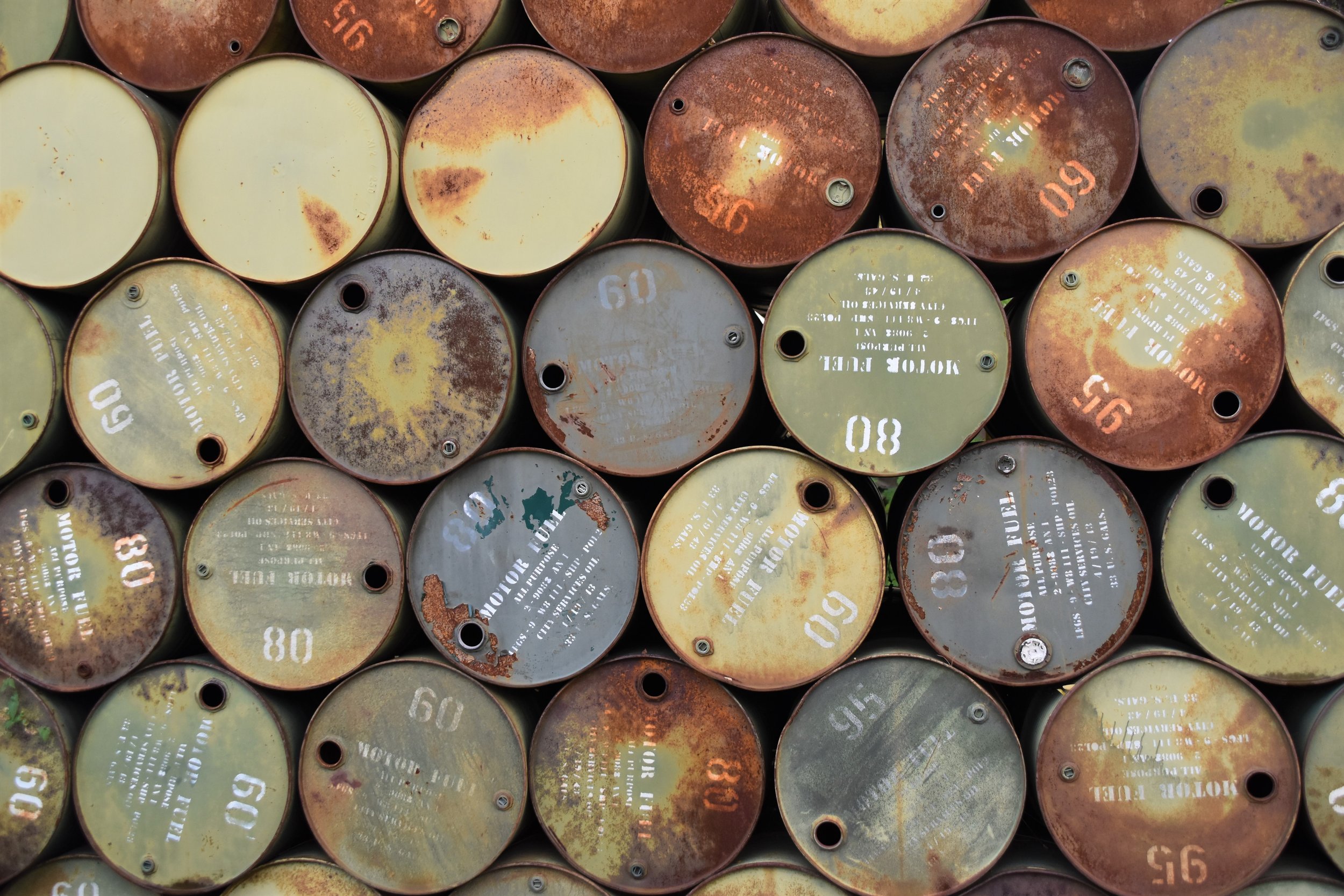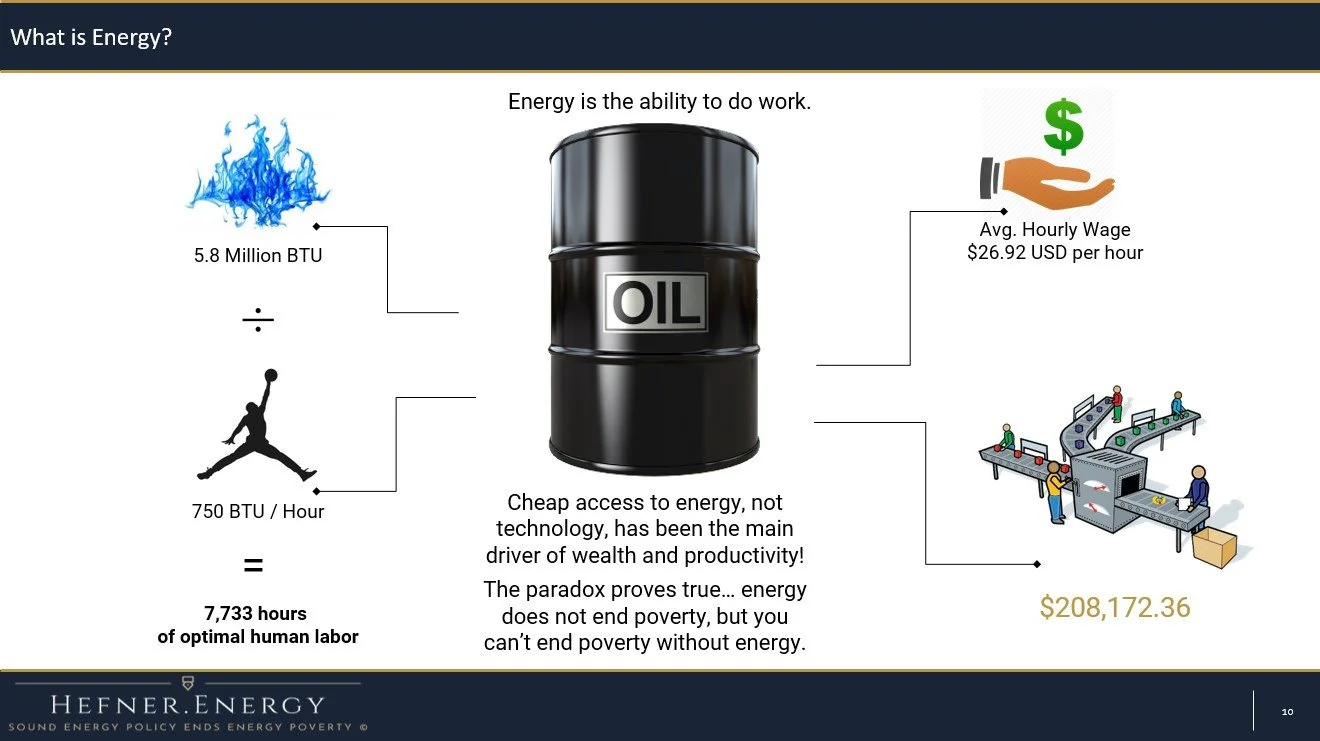How Much Is A Barrel of Oil Worth?
Photo by Waldemar Brandt on Unsplash
It’s a thought-provoking exercise when I stand in front of a room and ask for hands to be raised if the crowd believes oil is worth $50. I ask them to keep their hands raised if they believe it’s worth $100; most hands remain firmly in the air. $200? Most hands go down; $500? More go down. $1,000? A rare hand, if any, typically remains boldly in the air. Let’s examine together what a barrel of oil does when its value is WORK.
Energy is the ability to do work. A barrel of oil contains 5.8 million British Thermal Units of energy in a typical 42-gallon barrel. A human in peak physical condition is capable of putting out 750 BTU per hour of work (we will ignore that a human can’t maintain this pace). That translates to a barrel of oil doing 7,733 hours of optimal human labor. At the average wage of $26.92 USD per hour, a single barrel of oil produces $208,172.36 of skilled labor! That’s remarkable!
Even more remarkable, oil stores this energy as potential energy. That barrel might cost $70 and weigh 300 pounds when full. To gain the equivalency in batteries, you would need over 33,000 pounds of Tesla’s Powerwall batteries at a cost of more than $1.3 million.
It’s even more amazing once you realize that this liquid is able to produce over $200,000 worth of economic output, for less than the price of a Coca-Cola, and without requiring the added expense of storage. If that’s hard to believe, here is the math: a barrel of oil contains 42 gallons; the average price of oil in 2021 was $67.99 USD per barrel, so that comes to $1.62 per gallon. Costco sells 8 liters of soda for $6, a price that amounts to $2.85 per gallon.
Illumination from petroleum oil helped save the whales, not Greenpeace. Prior to petroleum oil (kerosene), whale oil was used to illuminate society; it was a luxury b/c it burned brighter than candles and cleaner than wood fires. By 1830, the United States was the global whaling leader. At its peak, whaling produced 600,000 barrels of whale oil annually. That changed after the Drake well, which produced in one day what it took a whaling voyage to produce in 3-4 years. By 1900, U.S. whaling output was 10% of its peak. Vegitable oils helped too. Whaling peaked in 1962, 13-years before Greenpeace heavily publicized action in Vancouver.
“Grand Ball Given by the Whales,” Vanity Fair, April 20, 1861: In this political cartoon in Vanity Fair from April 1861, just one week after the start of the Civil War, whales celebrate the discovery of oil and the possibility of diminished demand for whale oil.
Plastics derived from petroleum saved the leatherback turtles and elephants too, not Greenpeace. The next time someone tries to tell you how horrible this fuel is, I hope you are able to view it differently than the Social Dilemma marketing machines, which prey upon your Cognitive Biases, would have you believe.



